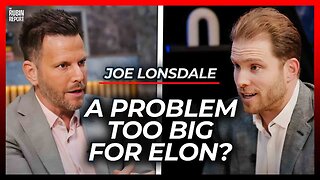Premium Only Content

#145 Pay-Per-Use
Definition:The pay-per-use business model, also known as the pay-as-you-go or usage-based model, involves customers paying for a product or service based on their actual usage or consumption rather than making a one-time purchase or subscribing to a fixed plan. It is characterized by flexibility and cost transparency, where customers are billed for the specific quantity or duration of their usage.
History:The pay-per-use model has evolved over time, driven by advancements in technology, changes in consumer behavior, and the need for more flexible pricing structures:
Telecommunications: The pay-per-use model gained prominence in the telecommunications industry with the introduction of pay-as-you-go mobile phone plans. Customers were charged based on the number of minutes or texts they used.
Utilities: Utilities such as electricity, water, and gas have long employed a pay-per-use model, with customers paying for the amount they consume each billing cycle.
Software: The software industry saw the adoption of pay-per-use licensing models, particularly with the rise of Software as a Service (SaaS) providers. Customers pay for cloud-based software services on a subscription basis, often with usage-based pricing.
Transportation: The transportation industry, particularly ridesharing services like Uber and Lyft, introduced the pay-per-use model for transportation. Customers pay for rides based on distance traveled or time spent in a vehicle.
Examples of the Pay-Per-Use Business Model:
Mobile Phone Plans: Many mobile carriers offer pay-as-you-go plans where customers pay for the minutes, texts, and data they use each month.
Cloud Computing: Cloud service providers like Amazon Web Services (AWS) and Microsoft Azure offer pay-per-use pricing, where businesses pay for computing resources, storage, and data transfer based on actual usage.
Streaming Services: Streaming platforms like Netflix, Amazon Prime Video, and Spotify use a pay-per-use model where subscribers are charged a monthly fee based on their consumption of content or music streaming.
Electricity and Utilities: Utility companies charge customers based on their actual consumption of electricity, gas, and water, with metered usage determining the bill.
Ridesharing: Companies like Uber and Lyft charge passengers for rides based on factors like distance traveled, time spent in the vehicle, and demand during peak hours.
Car Sharing: Car-sharing services like Zipcar and Car2Go allow customers to pay for car rentals on an hourly or per-minute basis, depending on usage.
Parking: Some parking facilities use pay-per-use models, where customers pay for the time they occupy a parking space, often via mobile apps or parking meters.
Photocopying and Printing Services: Commercial photocopying and printing services often charge customers per page or per printed document.
www.antharas.co.uk/ companies website or top book distributors!
#BusinessStrategy
#Entrepreneurship
#Leadership
#Management
#Marketing
#Finance
#Startups
#Innovation
#Sales
#SmallBusiness
#CorporateCulture
#Productivity
#SelfDevelopment
#SuccessStories
#PersonalBranding
#Networking
#Negotiation
#BusinessEthics
#TimeManagement
#GrowthStrategies
#MarketAnalysis
#BusinessPlanning
#FinancialManagement
#HumanResources
#CustomerExperience
#DigitalTransformation
#Ecommerce
#SocialMediaMarketing
#BusinessCommunication
#ChangeManagement
-
 9:56
9:56
AV
4 months ago#1148 Press release - Flush to Fuel
15 -
 14:33
14:33
IsaacButterfield
10 hours ago $0.27 earnedINSANE WOKE MEN OF TIKTOK!
8656 -
 1:58:16
1:58:16
The Charlie Kirk Show
2 hours agoAmericaFest: Day 2 | Beck, McKoon, Steele, Nagao, Galaszewski, Bowyer, Brown, Amanchukwu | 12.20.24
49.7K2 -
 54:15
54:15
The Dan Bongino Show
5 hours agoSaving The U.S. Military w/ SEAL Andy Stumpf (Ep. 2392) - 12/20/2024
465K591 -
 LIVE
LIVE
The Dana Show with Dana Loesch
2 hours agoGOVERNMENT SPENDING BILL FAILS | The Dana Show LIVE On Rumble!
687 watching -
 LIVE
LIVE
Scammer Payback
2 hours agoCalling Scammers Live
217 watching -
 1:01:34
1:01:34
Dr. Eric Berg
3 days agoThe Dr. Berg Show LIVE December 20, 2024
35.5K5 -
 1:01:03
1:01:03
The Rubin Report
4 hours agoTech Legend Gives the Real Odds of Elon Musk Successfully Cutting Gov’t | Joe Lonsdale
50.2K9 -
 1:33:00
1:33:00
The Shannon Joy Show
5 hours ago🔥🔥Chip Roy's Fabulous Christmas Shutdown - Mr. Scrooge Or Miracle On K-Street? 🔥🔥
14.6K2 -
 53:31
53:31
Dave Portnoy
5 hours agoThe Unnamed Show With Dave Portnoy, Kirk Minihane, Ryan Whitney - Episode 40
57.5K